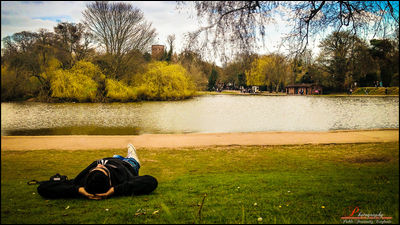Before the industrial revolution, working hours were much shorter than today

by
The industrial revolution that took place in the 18th century created a “capitalism economy” in which capitalists who have private means of production, such as factories and machinery, hired workers to create goods and obtain capital. Since the capitalist economy is based on the relationship between employers and workers, it is said that problems such as the improvement of the working environment and the rights of workers were born from the capitalist economy. Prior to the industrial revolution that created such a capitalist economy, “General working hours were shorter than today,” explains Juliet Shore, a sociology professor at Boston College .
Preindustrial workers worked fewer hours than today's
https://groups.csail.mit.edu/mac/users/rauch/worktime/hours_workweek.html
The average working time of 13th century British farmers was 1620 hours per year. Also, when farmers' wages soared in the latter half of the 14th century, many workers refused to work every day and were said to have worked only as many days as needed to obtain general income. For 14th century British workers, the annual working hours are estimated to be 240 days x 6 hours = 1440 hours.

by
In medieval Europe, a day's work lasted from sun setting until sun set, about 16 hours in summer and about 8 hours in winter. Furthermore, between work, breakfast, lunch, nap, dinner and breaks were sandwiched, and labor was intermittent. These breaks were recognized as a traditional right for workers, and it was said that they often did not work full-time during the off-season of agriculture. According to Mr. Shore, a British farmer in the 15th century can calculate that his working hours were about 1980 hours per year.
In addition, the medieval calendar had many holidays, and in addition to Christmas, Easter, and summer holidays, there were also many saints' rest days set by the church. On these holidays, people are reported to have eaten at churches and participated in festivals. It seems that about one third of the year was closed in medieval England. Furthermore, in France in the same period, Sundays on the 52nd, rest days on the 90th, and holidays on the 38th were set. This is 180 days of the year, which means that half was off. This seems to have been recorded in a memorandum by Father James Pilkington, who was bishop in the city of Durham in northeastern England in the 16th century.
Before the capitalist economy was born, people who had been living in the Middle Ages tend to have an image of working constantly from dawn to late night. 'It's not true,' says Shore. According to Mr. Shore, people's time has been taken away by labor since the capitalist economy was born, the most time was exploited in the mid-19th century. For example, it is said that 1840 British workers worked 3105-3588 hours a year, and 1850 American workers worked 3150-3650 hours a year.

by Jean-François Millet
In the United States, the work environment has been revised since then, and according to the data of the Bureau of Labor Statistics in 1987, average working hours were reduced to 1949 hours per year. In the UK in 1988, it is reported that the average working hours of workers in the manufacturing industry has improved to 1856 hours per year.
Related Posts:
in Note, Posted by log1i_yk







